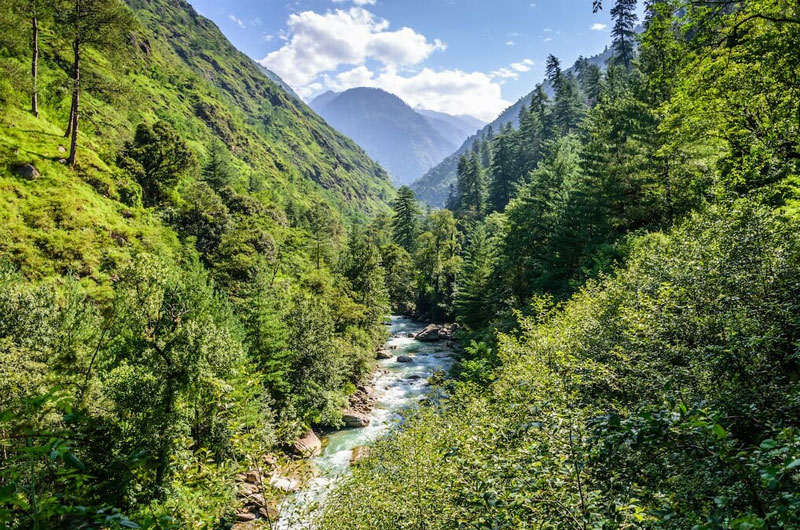
The Great Himalayan National Park: A Sanctuary of Pristine Wilderness
The Great Himalayan National Park (GHNP), located in the state of Himachal Pradesh, India, is a UNESCO World Heritage Site renowned for its outstanding biodiversity and majestic Himalayan landscapes. Established in 1984, the park spans approximately 1,171 square kilometers and is characterized by its diverse ecosystems, including alpine meadows, dense forests, and snow-clad peaks. This guide provides a comprehensive overview of The Great Himalayan National Park, highlighting its specialties, locality, best time to visit, and nearby amenities.
Overview of The Great Himalayan National Park
Location and Geography
- Locality: Himachal Pradesh, India
- Geographical Features:
- Situated in the Kullu district of the Western Himalayas
- Encompasses pristine alpine valleys, glaciers, and high-altitude peaks
- Accessible from Kullu and Manali, major towns in Himachal Pradesh
Specialty
- UNESCO World Heritage Site:
- Recognized for its exceptional biodiversity and conservation significance
- Home to rare and endangered species such as the Western Tragopan and Himalayan Tahr
- Habitat for elusive predators like the snow leopard and Himalayan brown bear
Best Time to Visit
- Optimal Seasons: April to June and September to November
- Weather Conditions:
- Summer (April to June): Mild days, ideal for trekking and wildlife spotting
- Autumn (September to November): Clear skies, vibrant foliage, excellent for photography
- Winter (December to March): Cold and snowy, park remains closed due to heavy snowfall
Wildlife and Flora
Fauna
- Mammals:
- Snow leopard, Himalayan brown bear, blue sheep, musk deer, and langur
- Over 375 species of fauna including leopards and Himalayan tahr.
Avifauna
- Birds:
- Approximately 181 bird species, including the Western Tragopan, Himalayan Monal, and Golden Eagle
- Rich diversity due to varied habitats ranging from alpine meadows to coniferous forests
Flora
- Vegetation Types:
- Alpine meadows, oak and rhododendron forests, and subalpine and temperate forests
- Rare and endemic plant species thriving in the park’s diverse microclimates
Zones and Activities
Main Zones
- Tirthan Valley:
- Core area with trekking trails and wildlife viewing opportunities
- Conducts eco-tours and educational programs on biodiversity conservation
Activities
- Trekking:
- Offers trekking routes ranging from easy to challenging
- Trails lead through breathtaking landscapes and diverse wildlife habitats
- Wildlife Watching:
- Guided tours to spot elusive mammals and colorful bird species
- Opportunities for wildlife photography and birdwatching
- Camping:
- Permitted in designated camping sites within the park
- Experience the wilderness under starlit skies amidst pristine natural surroundings
Nearby Restaurants and Hotels
Restaurants
- Himalayan Trout House:
- Offers local Himachali cuisine and trout delicacies
- Located in Tirthan Valley, near the park’s entrance
Hotels and Lodges
- The Himalayan:
- Eco-friendly lodge with panoramic views of the Himalayas
- Provides guided tours, nature walks, and cultural experiences
- Solang Valley Resort:
- Luxury resort in Manali, offering modern amenities and scenic views
- Arranges wildlife excursions and adventure activities
- The Apple Valley Resort:
- Comfortable lodging in Kullu, with easy access to The Great Himalayan National Park
- Organizes wildlife safaris, birdwatching tours, and trekking expeditions
Conclusion
The Great Himalayan National Park stands as a sanctuary of pristine wilderness and unparalleled biodiversity in the heart of the Himalayas. Whether you are a wildlife enthusiast, an adventure seeker, or a nature lover, the park offers an enriching experience amidst its breathtaking landscapes and diverse ecosystems. Visit during the recommended seasons to witness the park’s vibrant flora and fauna, embark on thrilling treks, and immerse yourself in the serenity of the Himalayan wilderness. Explore the park’s conservation efforts, engage in eco-friendly activities, and discover why GHNP is a cherished gem for nature conservation and ecotourism in India.
